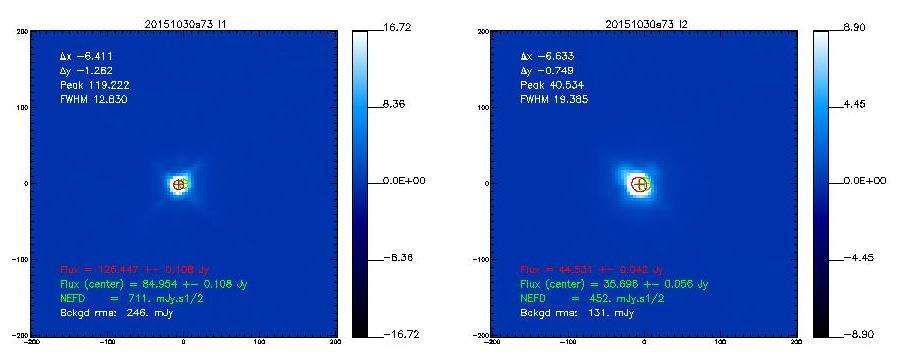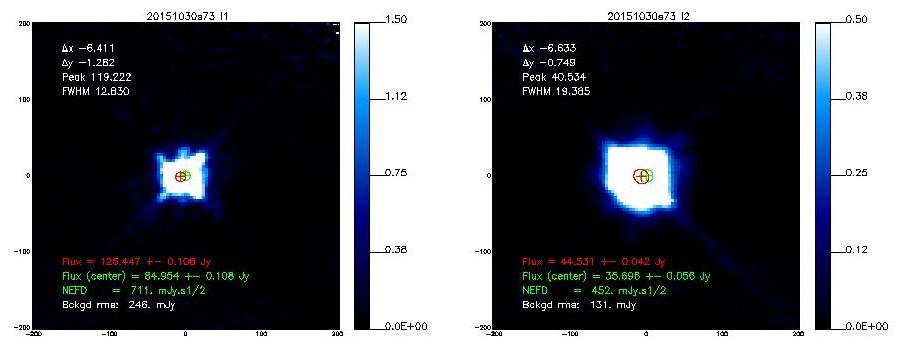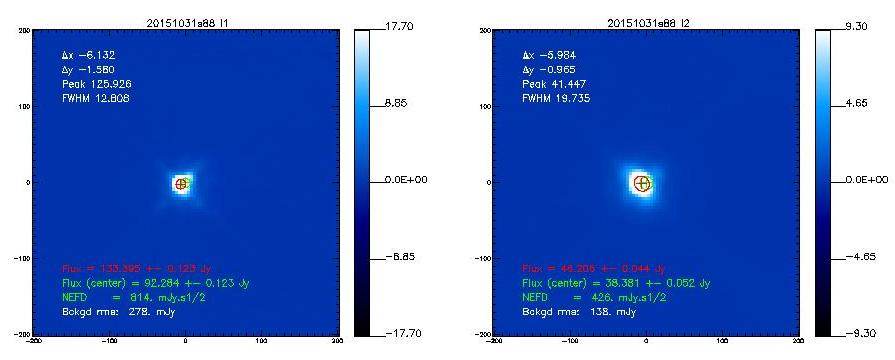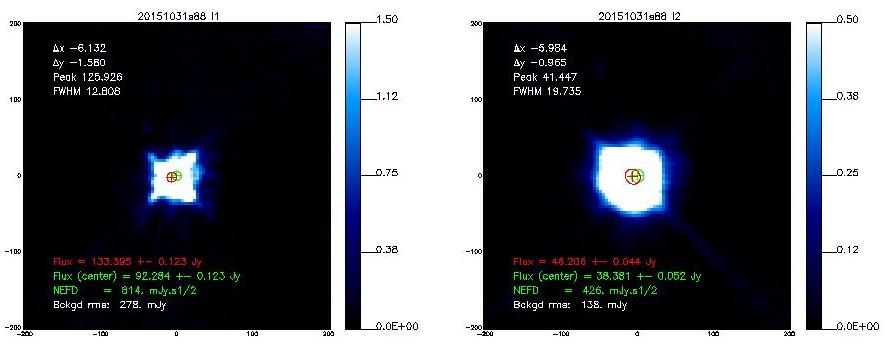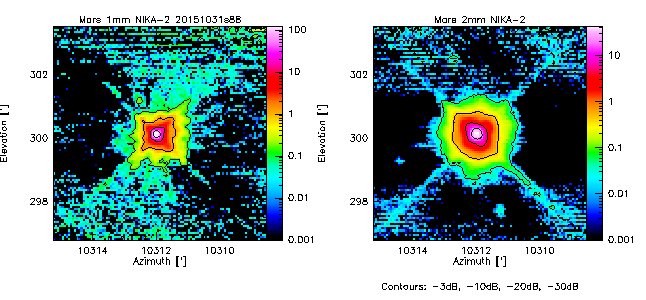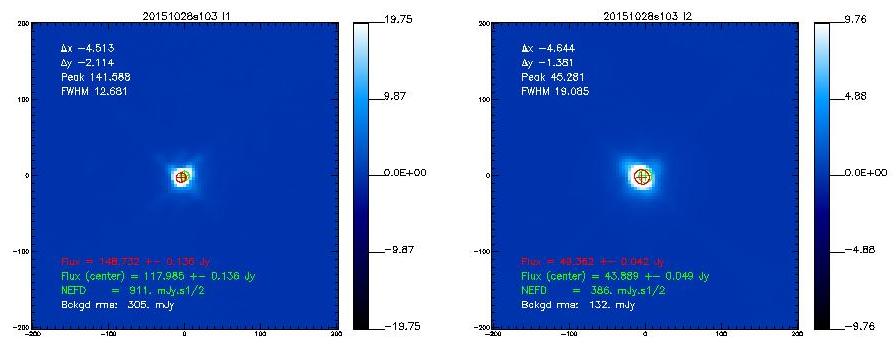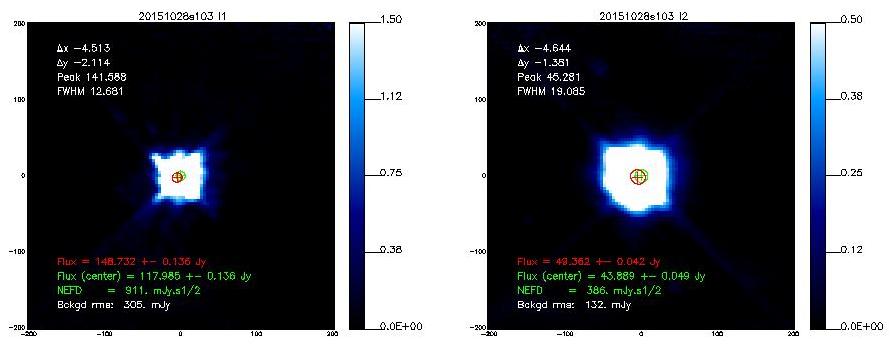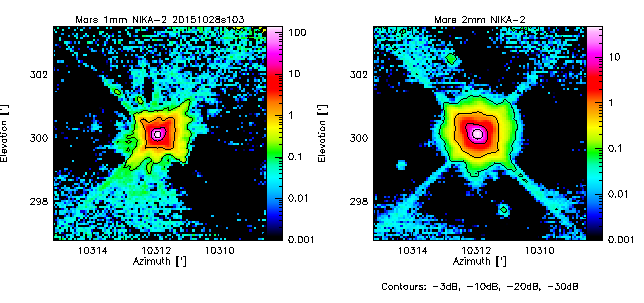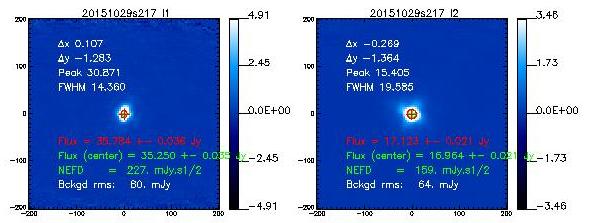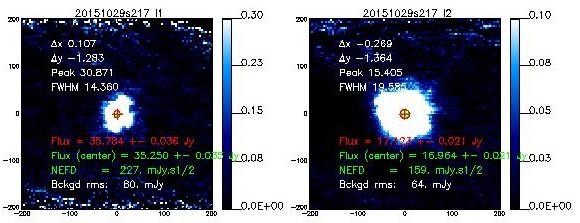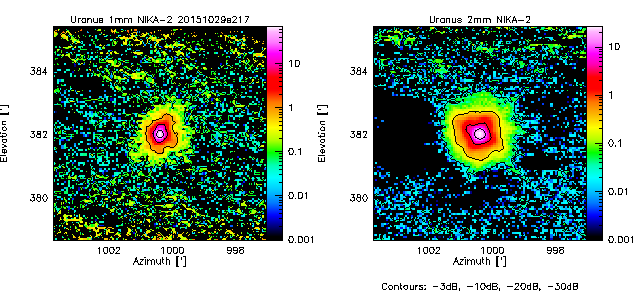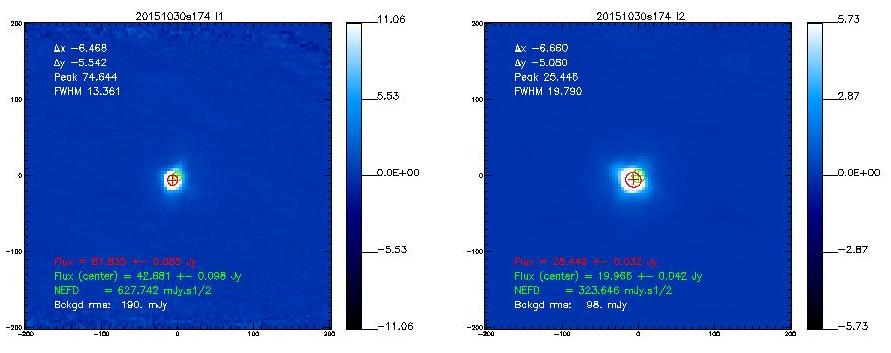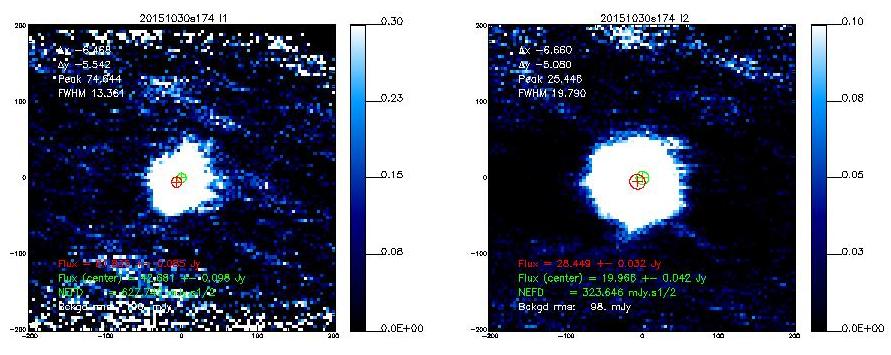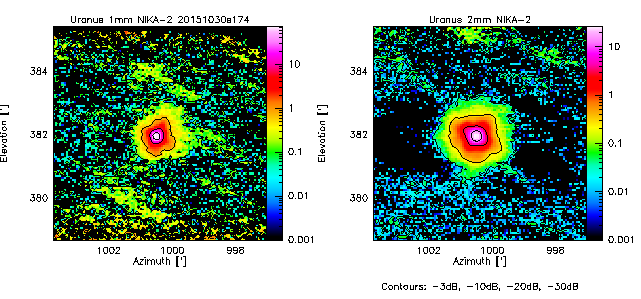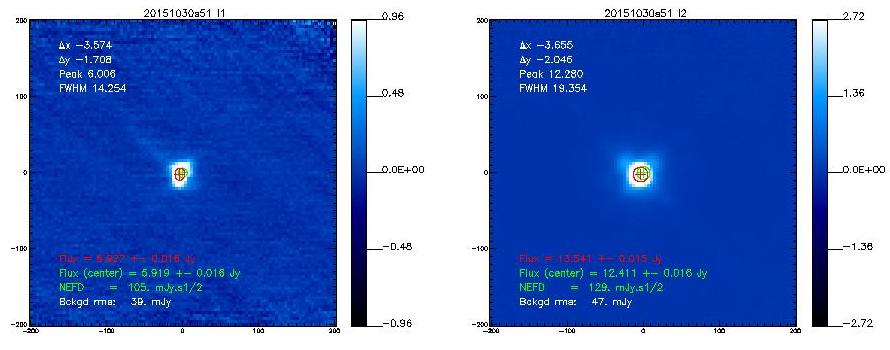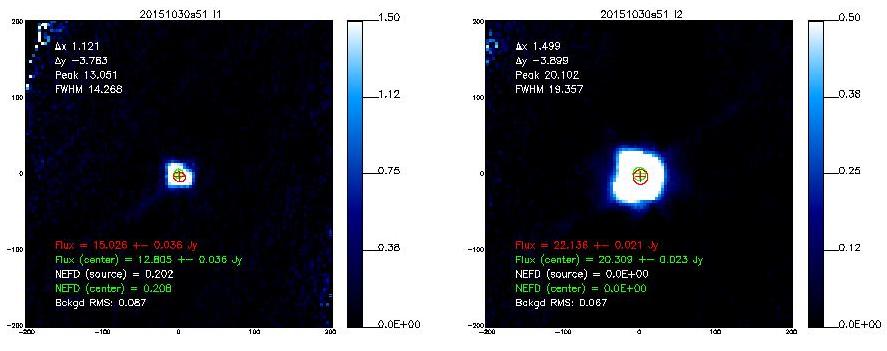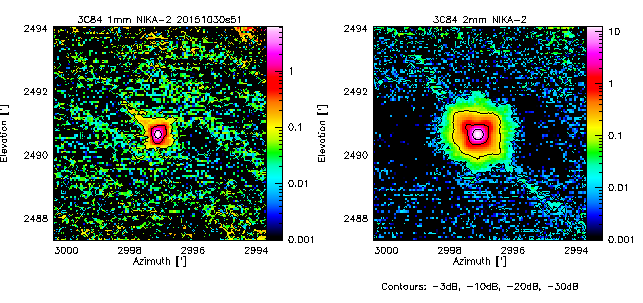|
Size: 7641
Comment:
|
Size: 7608
Comment:
|
| Deletions are marked like this. | Additions are marked like this. |
| Line 1: | Line 1: |
| Describe OffProcNika2Run1Beam here. <<BR>> | = Discussion on NIKA-2 beams = |
| Line 10: | Line 12: |
| = Discussion on beams = |
Discussion on NIKA-2 beams
Page created by FXD, CK
Last updated by SL 2015-11-02, JFL 2015-11-05
Contents
We measure the beam by using the middle scan of the 3-scans sequence launched with @beammap Here are the best-of on 3 sources.
Preliminary findings
- The main beam (the Gaussian part) seems with a normal width aka 11", 17" (but only in single-pixel analysis). Blind 2D Gaussian fits to the maps result in broader beams of 13", 19.5" (see Table below).
- The quadrupod holding the secondary gives clear diffraction marks as a faint cross at about -30dB, visible in all Mars scans. Uranus and 3C83 are not bright enough to reach -30dB. To go deeper, we need Saturn or Jupiter maps.
- In between, there is a large near-side lobe, especially at 2mm (but also visible at 1mm), that shows up as a rectangular pyramid-like shape at the 10% level, the origin of which is unknown. It seems to scale with wavelength. It was not so apparent in NIKA. Therefore the quality of the dichroic is not at the center of this issue.
In fact the rectangular shape of the first side lobe is known and expected from optical simulations (I didn't communicate about it until now). It is due to the combined diffraction on the primary mirror and the tetrapod holding the secondary mirror. However, the expected level of this side lobe is ~2% of the central peak when the focus is correct, and it increases to 10% if the defocus along the Z axis of M2 is ~0.7 mm. See the figure at the bottom of this page for more details. -SL-
For comparison, see the NIKA-1 beam maps in Fig.8 of Catalano+2014 and in Fig.8 of Monfardini+2011.
- The following table shows the FWHMs derived from 2D-Gaussian fits to the observed emission.[Note that if the error beam is included in the fit, the main beam narrows down]
Source
Date/Scan
HPBW
HPBW
1mm
2mm
Mars
20151030s73
12.9
19.3
Mars
20151031s88
12.7
19.6
Uranus
20151029s217
14.5
19.5
Uranus
20151030s174
13.2
19.7
3C84
20151030s51
14.3
19.4
- Will redo the greg plots of the beams, together with 2D Gaussian fits, and create radial averages, once the coordinate problems in the IDL fits data have been solved. This is actually on the way. (CK 4-Nov-2015)
Beam maps on Mars
- 20151030s73
- 20151031s88
- 20151028s103
Beam maps on Uranus
- 20151029s217
- 20151030s174
Maps on 3C84
Beam maps
- 20151030s51
Smaller maps by JFL under poor conditions
- A short report on NIKA2 beamwidth using repeated observations of 3C84 in poor weather condition (tau_225 ~ 0.7) .
Means and rms from 9 SMALL otf (5'x5') on 3C84 (scans 20151104s21, s22, s23, scans 20151105s13, s14, s15, s16, s17, s19)
array
FWHM
uncert
1
11.92"
+/-0.52"
2
18.89"
+/-1.03"
3
11.37"
+/-0.51"
Means and rms from 3 LARGE otf (20'x20') on 3C84 (scans 20151105s18, s20, s21)
array
FWHM
uncert
1
13.18"
+/-0.83"
2
19.71"
+/-1.20"
3
12.97"
+/-0.37"
- Beams are marginally smaller with smaller maps. Statistics is still limited. Weather was poor. [For larger maps, the outer pixels see the source, and as the outer pixels are less well focussed, the beam broadens. (CK)]
Theoretical beams from Zemax simulations (for comparison, SL 2015-11-02 and 04)
By design of the optics the image plane is as flat and aberration-less as possible, but for such a big FoV and given the constraint on the number of lenses we can't avoid that the optimal focus surface on the image plane has a residual bowl shape, which correspond to 0.4 mm amplitude of M2 along Z between the central pixel and an edge pixel (6.5'diameter ring). But the distance along the M2 Z axis between the best central and the best average is 0.2mm (= best at the 4' diameter ring). As a consequence there's a Strehl ratio (~beam peak amplitude) variation of 10% at 1.2mm and 4% at 2mm along the FoV if the focus is on the central pixel, but these values are reduced to less than 3% at 1.2mm and less than 1% at 2mm if the focus is on the 4' diameter ring.
The images below show the 1mm band beam shape in false color and logarithmic scale, and a cross section in linear scale, for the central pixel (top) and an edge pixel (bottom) for various position of the focus (note the 2mm band beam shape is identical to the 1mm beam, but it is larger and twice less sensitive to the focus variation). For the best central focus and best average focus I also added some plots of the Strehl ratio along the FOV on the X axis of the image plane from 0 to 3.25' radius. As you can see in any case we are still significantly above the diffraction limit, so the beams are always acceptable to maintain the angular resolution (in the worst case of 10% scatter we convolve a 0.2mm radius aberration spot with a 1.7mm radius Airy pattern for the central pixel and a 0.8mm radius aberration spot with a 1.7mm radius Airy pattern for the edge pixel, while the aberration spot variation is at most +/- 0.1 mm on the image plane for the best average focus), but less optimal in terms of contrast on the image (e.i. dynamic, e.i. gain) if we focus on the central pixel versus the best average focus.

